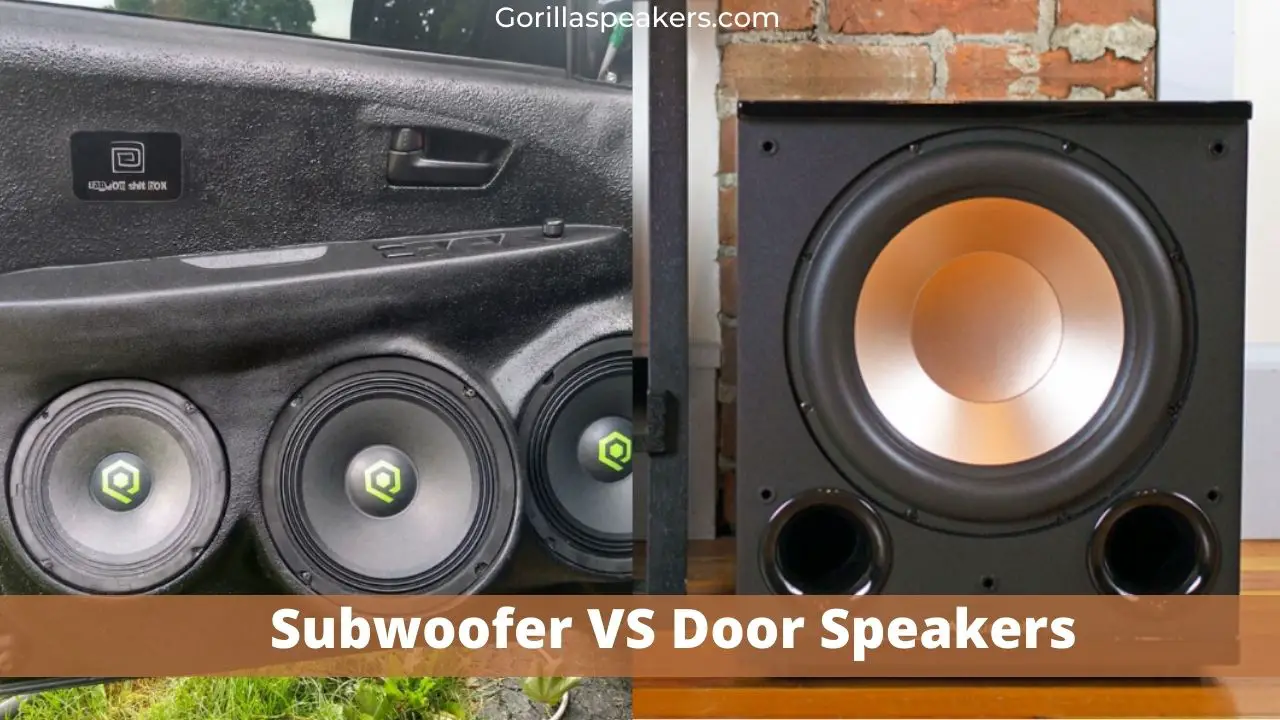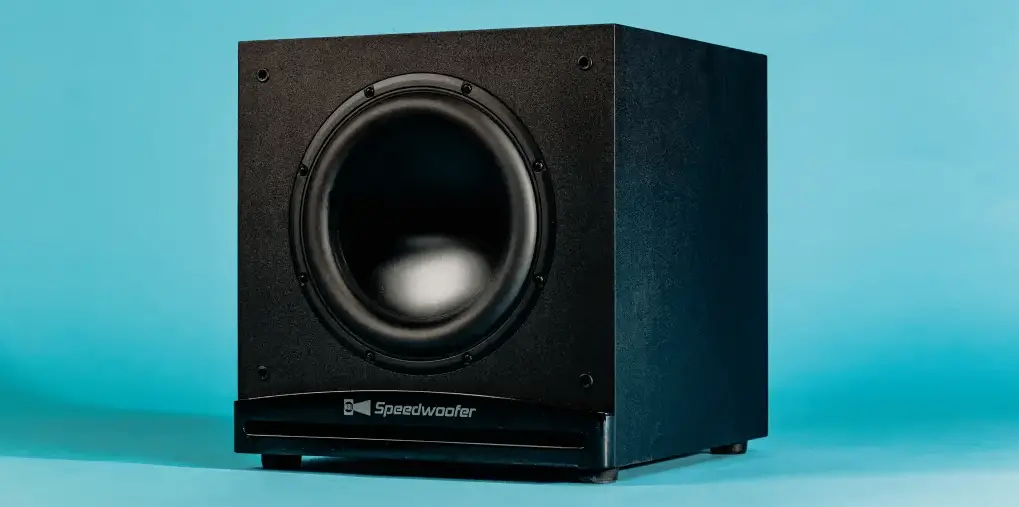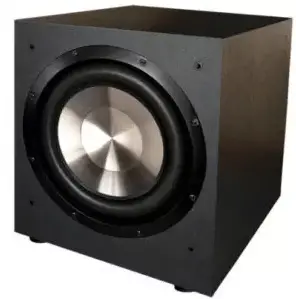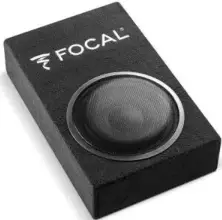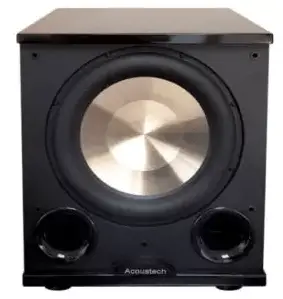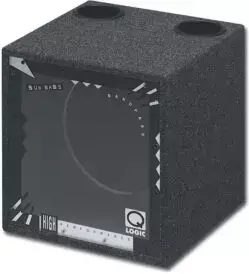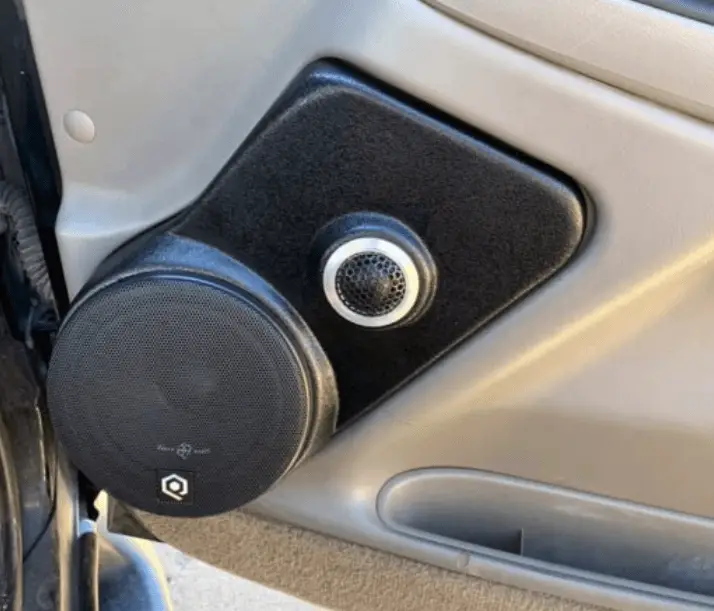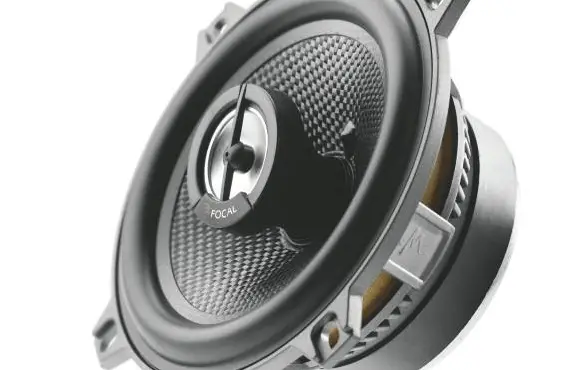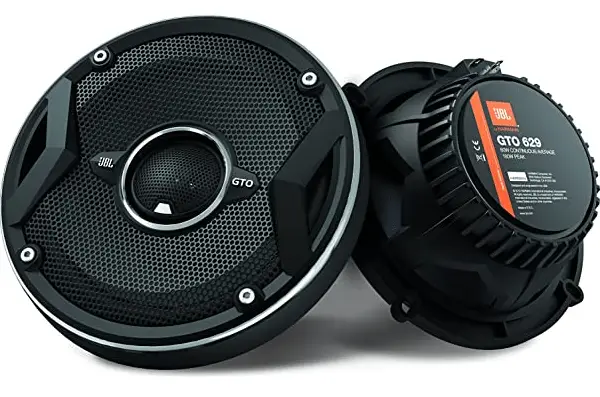There are multiple types of equipment that can be used to create a great sound that you love. But, when it comes to subwoofers and door speakers, Is there anyone more deserving of your time, effort, and money?
When you’re listening to your favorite music on an iPod, a Smartphone, a computer, or a home entertainment system, there would be no audible sound at all if there were no speakers.
However, if you dive into the world of audio systems deeper, you’ll come across subwoofers and door speakers.
A subwoofer and a door speaker are similar phrases. Because they both transform AC signals into mechanical energy in the form of sound, along with that, they both are transducers. However, Is there anything that distinguishes them?
Here’s all you need to know about Subwoofers and Door Speakers.
What Are Subwoofers?
A subwoofer (or sub) is a loudspeaker that is meant to reproduce low-pitched audio frequencies known as bass and sub-bass, which are lower in frequency than those that a woofer can (optimally) generate.
And the frequency range of a subwoofer is frequently determined by its price. Professional subwoofers are more expensive, but they have a frequency range of 100Hz and down.
The frequency range of less priced subs is typically 20Hz to 200Hz, which is sufficient for most forms of music.
A wood shell protects the sensitive component of most subwoofers with a port or vent for the audio.
Why Buy Subwoofers?
A subwoofer allows you to experience the sound with a feel. While your bookshelf or floor standing speakers just provide bass.
Without a subwoofer, listening to heavy bass music like hip hop or EDM or viewing a full-throttle action movie leaves a lot to be desired. Furthermore, you are not experiencing the song or film in the manner the musician or producer intends.
You may wonder why you would want one if you don’t listen to rap or watch action movies.
Undoubtedly, a subwoofer is a bass-thumping juggernaut, but that’s only the beginning. A good subwoofer relieves your loudspeakers from heavy lifting, resulting in a better overall system.
- Subwoofers make the dynamics become more engaging, the soundstage expands, and the stereo imaging improves.
- A subwoofer may also help you to provide a more lively, all-encompassing sound, even if you love playing folk tunes and watching dialogue-driven indie films.
Is It Worth Buying Subwoofers?
Whether you’re an audiophile or a cinephile, one troubling question that’s likely to be on your mind is whether or not a subwoofer is worth it?
If you have a tight budget or if you are just getting started with home theater, a subwoofer is a must-have if you want to enjoy a three-dimensional sound experience.
Having said that, the following three important factors will clearly demonstrate why a subwoofer is an essential piece of audio equipment:
- It Unveils Those Sounds and Feelings That Your Surround Speakers Can’t.
- Plays a lot of bass without distorting it.
- It Unleashes Your Surround Speakers’ Sonic Potential.
Types Of Subwoofers
- Active Subwoofers
- Passive Subwoofers
- Ported Subwoofers
- Sealed Cabinet
- Passive Radiator
- Front and Down Firing Types of Subwoofers
- Bandpass Subwoofers
- Horn Loaded Subwoofers
Active Subwoofers
Powered subwoofers are another term for active subwoofers. This style of a subwoofer is self-contained, with speakers and amplifiers. This indicates that it has its own AC power supply.
This subwoofer will be effective in a sound system for live performance and for a home setup.
A powered subwoofer just requires a line output (sub out, pre-out, or LFE out) from a home theater receiver in addition to AC power.
This design relieves the amp/receiver from much of the power burden, allowing the amp/receiver to focus on powering the mid-range and tweeters. Powered subwoofers are the most common form of subwoofer utilized in home theater setups.
Passive Subwoofers
Passive subwoofers are so named because they require an external amplifier to operate.
To reproduce lower frequencies, the passive subwoofer requires more power. For large rooms, the passive subwoofer is excellent.
Like the other speakers in your system, This variety of subwoofer is also driven by an external amplifier.
Extreme bass requires greater power to reproduce low-frequency sounds. Therefore an amplifier or receiver must be capable of maintaining bass effects through the subwoofer without overloading the amplifier.
The quantity of electricity required depends on the speaker’s needs as well as the size of the area.
Sealed Cabinet Subwoofers
Subwoofers with sealed surfaces have one or both front and back faces enclosed in a sealed box.
This type of setup may usually be accommodated by a smaller box. Sealed subwoofers are ideal for those who prefer “tight” bass.
A correctly designed sealed subwoofer would often have less phase rotation, lower group delay, and less ringing in the time domain.
Subwoofers with sealed cabinets provide more accurate frequency response and an adequate representation of soundtracks.
These features make the sealed subwoofer a perfect choice for essential music applications; many enthusiasts describe the functions of sealed subwoofers which are: sound tighter, more articulate, or melodic, with less perceived overhang.
Ported Subwoofers
Compared to sealed subwoofers, ported subwoofers have more ports. A woofer and one or more ports allow air to escape the enclosure in ported subwoofers.
The woofer and port are responsible for getting air out of the box. This is how you may generate a more prominent, louder sound with a single box. Ported subwoofers are recommended for those who enjoy “boomy” bass.
A ported subwoofer design requires a somewhat large enclosure size in order to attain both a deep system tuning frequency and adequate port area to reduce whistling effects (aka port noise) at high drive levels.
A wider enclosure also improves system efficiency in the higher octaves, eliminating the need for further EQ to create a naturally deep bass extension.
When compared to a sealed subwoofer in the same price range, the result is 2-4X more peak dynamic output in the 18-36 Hz octave.
This makes ported subs an obvious choice for system applications with larger rooms and reference-level playback levels, especially on Blu-ray action and sci-fi movies with demanding LFE tracks.
Passive Radiator Subwoofers
Passive radiators are used in modern speakers because they are an effective technique to improve sound quality.
This method can be used to boost the power and resonance of a small speaker system. The air pressure created by the smaller speakers, which are powered by a battery or AC source, is used to power the passive radiator speaker cones.
They have two drivers to add to the active driver instead of a port. The passive radiators are not connected to the amplifier. As a result, as the air inside the cabinet expands and pressurizes, they just move back and forth.
Front And Down Firing Types Of Subwoofers
Front-firing units emit sound from one side, while down-firing units release sound from the bottom. Down-firing subwoofers are more common than front-firing subwoofers.
A front-firing subwoofer produces vibrations that are sensed in the air, whereas a down-firing subwoofer produces vibrations that are felt on the ground. The floor is literally shaken by subwoofers shooting downward.
Bass reflex ports can be found on both front- and down-firing subwoofers. This is a tube-like aperture in the speaker cabinet that helps to boost the bass.
It works like this: The membrane of a loudspeaker slides back and forth. The air that is pushed back is usually wasted.
Bandpass Subwoofers
Subwoofers with a bandpass filter produce clean, realistic bass. You can precisely control the number of basses that will be played through the speakers. The bandpass includes four, six, and eight bandpasses.
A bandpass design is frequently utilized to produce a high sound pressure level with maximum bass production within a specific frequency range with a two-chamber composite enclosure.
The driver is held by the dividing wall between the chambers; normally, only one chamber is ported. It’s essentially a modified vented box with the rear of the driver in a sealed compartment and the front of the cone’s radiation directed into a ported chamber.
A fourth-order electrical bandpass filter is efficiently created using this design. A sixth-order bandpass can be created by adding ports to both sides of the driver, resulting in a robust and low-distortion bass.
Horn-Loaded Subwoofers
The purpose of a horn-loaded subwoofer is to improve the air-to-speaker driver connection. It gives the idea of magnifying the sound. Still, in reality, a correctly built horn causes the speaker cone to transfer more of the electrical energy in the voice coil into the air, making the speaker appear to be more efficient.
The folding shape of most modern horn-loaded subwoofers allows for a lengthy horn route while decreasing bulk.
Horns are highly efficient, using less power for more output, and when multiples are coupled, they produce a 3dB gain per doubling of power.
However, they must be run at a lower frequency with enhanced directivity. The design also assists in the elimination of the enclosure’s resonance and the reduction of nonlinear distortion.
There aren’t many powered horn-loaded subwoofers on the market, but some passive designs can deliver impressive results.
Pros of Subwoofers
- Adding an active subwoofer improves mid-range sound, offers deeper bass, and relieves pressure on your audio system.
- The main speakers are not required to play low-frequency sounds, and the overall sound quality is substantially improved.
- The low-frequency driver relieves the primary speakers of a lot of stress, allowing them to play at a higher level while maintaining clarity.
- They sound even better than a full-range speaker because the sub and main speakers share their own distinct range of sounds.
Cons of Subwoofers
Despite the fact that subwoofers boost sound quality, they can still have a few flaws.
- A subwoofer cannot be used on its own. It can only be used with a speaker that is attached to it.
- Subwoofers aren’t always well-designed, which might lead to sound quality difficulties. It may even be tough to put them up.
Additional Subwoofer Characteristics
Subwoofers have a variety of design modifications and tuning options that help to improve low-frequency performance.
Ports
Some enclosures include an additional port to the speaker part of the subwoofer, which forces out more air and increases bass response more efficiently than sealed enclosures. Bass reflex is the term for this type of ported design.
Passive Radiators
To maximize efficiency and precision, some subwoofers use a passive radiator in addition to the speaker rather than a port. Passive radiators can be flat diaphragms or speakers without the voice coil.
Crossovers
The crossover is an electronic circuit that routes all frequencies below a certain point to the subwoofer, while the primary center speaker reproduces all frequencies above that point.
Directionality
A subwoofer’s reproduction of deep bass frequencies is non-directional. Human ears have a hard time determining the direction of the sound.
As a result, we only notice that an earthquake is all around us rather than coming from a specific direction.
Because powerful low-frequency sound is non-directional, a subwoofer can be positioned anyplace in the space that sounds best in terms of room size, floor type, furnishings, and wall construction.
What Is A Door Speaker?
A woofer that has a tweeter placed over it is referred to as a door speaker. Low to mid-frequency sound is handled by the woofer, while the high-frequency sound is handled by the tweeter.
These speakers are typically used in automotive audio systems, although they can also be found in other places.
It’s common information that the finest place to install speakers to produce the finest audio experience in your vehicle is in the doors.
Factory door speakers are included in most automobiles, but they may not provide your desired sound quality.
That is why, in order to improve your car’s sound system, you should invest in a set of aftermarket units.
Why Buy Door Speakers?
It’s likely that the sound quality coming from your factory-installed speakers is poor. Portions of audio files hide some of the mid and low frequencies.
Most aftermarket car door speakers can withstand a high power output, which means you’ll hear more music without distortion.
If you enjoy listening to music loudly, aftermarket door speakers combined with high-quality head units, amplifiers, and subwoofers may be the car audio update that you need to transform your vehicle into the greatest listening area.
Because the majority of these door speakers are made by industry-leading manufacturers, you can expect them to endure longer than factory-installed speakers.
If you want to update your car music without spending a lot of money, consider adding door speakers to your music system. Some of these speakers are full-range models that will provide sufficient bass without the need for more expensive woofers.
Is It Worth Buying Door Speakers?
If you’re an audiophile like me, you might think spending a lot of money on a quality set of speakers is fair.
However, as I compared costs, I began to doubt if Door speakers were worth the money.
Door speakers come with a maximum power output of 600 watts, high sensitivity, and power handling capabilities are built into the speakers.
These speakers have been explicitly designed to offer detailed, smooth, and booming sound. They are affordable and include all of the required components and functions for excellent sound.
The sound quality of expensive door speakers is better than the cheaper ones, but it’s still better than factory speakers in most cases.
Types Of Door Speakers
There are two types of Door speakers:
- Full range of Coaxial Speakers
- Component Speakers
Full Range Speakers
Full-range speakers, often known as coaxial speakers, are systems that include everything in one speaker.
In its most basic form, a full-range speaker has a woofer for low frequencies and a tweeter for high frequencies.
Other drivers, including super-tweeters and midrange speakers, are included in some models of coaxial speakers. Coaxial speakers come in a variety of sizes and make excellent OEM replacements for factory speakers.
- Simple sound upgrade, they’re a drop-in replacement for older factory-installed single cone speakers that sound terrible.
- Buyers can select from a variety of performance options and price alternatives, including different levels of tweeter quality, crossover design, cone materials, and higher power ratings.
- They provide performance that is comparable to separate 2-way component car speakers but without the need to install a separate speaker crossover.
- They’re easy to come by and really popular. In fact, they’re the most common automobile speaker upgrade, and they’re very easy to come by while shopping.
- Many people’s older speakers have poor frequency response, which can be easily fixed with coaxial speakers.
You should get Full Range Speakers:
- If you are on a limited price limit and do not want to spend loads of money, or you just need something that sounds decent but isn’t “high end.”
- You’re looking for a simple approach to replace your older speakers.
- You don’t intend to use amplification for your speakers and will instead rely on a standard stereo.
- You don’t want to put in the extra effort or run the extra wire that component speakers require.
- You don’t have the time, resources, or financial means to invest in a custom installation.
Component speakers
Component speakers have improved designs that seek to deliver the finest possible sound quality.
A simple component speaker will have a separate woofer for the base, tweeters, and detachable crossovers to guarantee that realistic sounds are supplied to the various drivers.
The units are designed to work in harmony, although they are installed in various parts of a vehicle.
- Even entry-level component speaker setups may provide excellent sound with better overall frequency response and sound accuracy.
- Silk, aluminum, ceramic, or other specific dome materials are common in tweeters with a more stiff and high-performance design.
- More power handling — typically 75 watts RMS, 100 watts RMS, or even higher.
- -12dB per octave crossover slopes (or higher) vs. coaxial tweeters’ usual -6dB/octave crossover.
- Better quality crossover components.
- Speaker connector terminals and installation accessories that are better.
- The ability to position the tweeters for greater stereo imaging during music playback at a line-of-sight listening angle and height.
However, it’s important to note that the installation process is more difficult for coaxial speakers, and the tweeter mounts may require custom fabrication.
You’ll also need to mount the crossovers, preferably away from moisture and close to where the speakers are installed.
They’re also more expensive, with many component speaker sets costing 1.5x to several times as much as coaxials of the same size.
Component speakers have always been a favorite of mine. I can confidently state that when used correctly and powered by an amplifier, a good and not even the most expensive model, the set of them can sound fantastic.
You should get Component speakers if:
- You want to utilize speakers made of more modern materials because the sound quality is important to you (especially for the tweeters)
- You prefer tweeter volume reduction and/or sharper cutoff speaker crossovers.
- Will be installing higher-end electronics in a custom home, automobile stereo, or marine speaker installation.
- You desire better stereo vision and critical listening with high-fidelity recordings for music playback.
- You want to use an amplifier to drive your speakers for more power and clarity.
The good news is that some component speaker systems can be used similarly to component speakers, making installation easier. In the process, you’ll save a lot of time and effort.
Component speakers, as previously stated, should be driven by an amplifier for optimum performance. You won’t get good sound from them if you use a low-power stereo system.
Pros of Door Speakers
- A grille is included with each speaker to protect the speaker cone.
- They feature a dark metallic appearance that will blend in with the majority of automotive interiors.
- The woofer, tweeter, and driver are all contained in a handy three-way design.
- A rubber encasement protects the speakers from harm. This device is highly sensitive, with a sensitivity rating of 89dB.
- Cone design with a modern twist.
- FlexFit mountings allow for minor modifications during installation. The midrange and highs are fantastic. The frequency range is 120 kHz to 22 kHz.
Cons of Door Speakers
- The middle sound isn’t the best. Extended tweeters that may not fit in all vehicle doors.
- The tweeter may extend a little too far. The rubber environment is fairly large.
- It might not be suitable with the other car doors. There is no amplifier. The speakers aren’t the loudest.
Additional Door speaker’s Characteristics
Capacity to handle power
The power-handling capability of a speaker indicates how much power it can handle before blowing out.
This factor is heavily influenced by the power rating of the car stereo or amplifier, and either item will provide the power output for the speakers.
If the stereo or amplifier system has a low output, buying a speaker with a high RMS power may not be a smart idea.
So the door speakers come with different qualities and power handling capabilities, which are mentioned on the back or guide of your door speaker. Must look for them before buying a door speaker
Crossovers from the outside
These speakers include an external crossover to achieve a clean separation of frequencies that reach the woofer and tweeter.
The tweeter and woofer will have an easier time because they will only hear frequencies that they can handle. The tweeter receives high frequencies from the crossover, while the woofer receives low frequencies.
Sensitivity
The sensitivity of a speaker is defined as the ratio of the sound it produces to the power it receives from the audio system.
Door speakers have a high sensitivity. If you have a low-power stereo system or head unit, high-sensitivity speakers are a good investment since they will work hard to provide you with high-quality sound.
Low-sensitivity speakers will work nicely if the system has a high-power output.
Size
Make sure you understand everything about your factory speakers before you go looking for new door speakers.
Remove them and take the proper measurements if you’re ready to replace them. Fortunately, most of the door speakers come in a perfect size.
Practically every automobile model has custom-made speakers, and you can obtain one that matches the configurations of your original speakers.
To conclude
Both subwoofers and door speakers have their upsides and downsides, as we have discussed above, but both produce a massive amount of sound.
A subwoofer can be helpful if you really want to create your bass end. In a home theater surround sound system, a subwoofer’s job is to capture and distribute low-frequency bass throughout the space. Each listener gets a solid feel and sonic experience with a high-quality subwoofer.
Whereas Door speakers are all-in-one speakers that offer everything you need. Although most cars come with factory door speakers, they may not provide the sound quality you desire.
That is why, in order to improve your car’s sound system, you should invest in a set of aftermarket units. The main reasons people choose Door speakers are the relatively low cost and ease of installation.
If the car only has one speaker per door panel, coaxial speakers are the way to go. High-end coaxial speakers are sufficient for the majority of listeners.
People who have a strong desire for bass, primarily audiophiles, prefer an advanced car speaker system composed of component speakers. Component car speakers give you better sound quality than coaxial speakers.
Also Read: Loudspeaker VS Subwoofer

